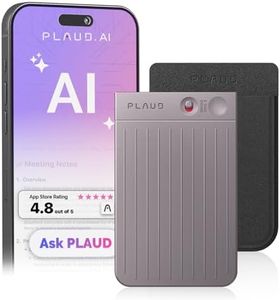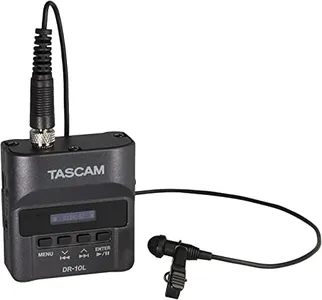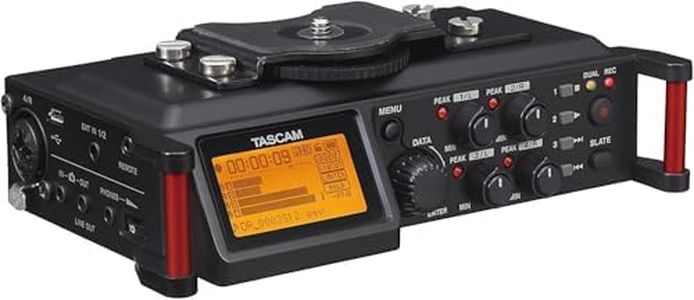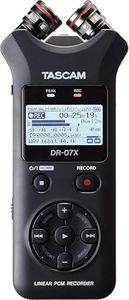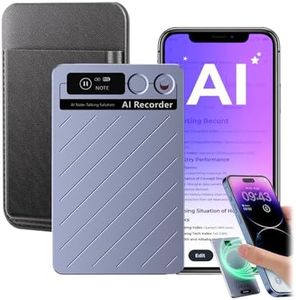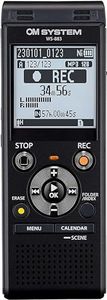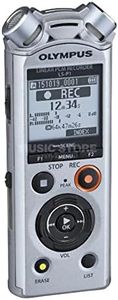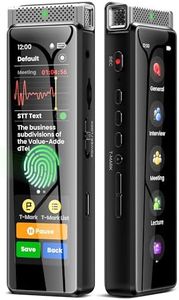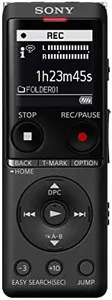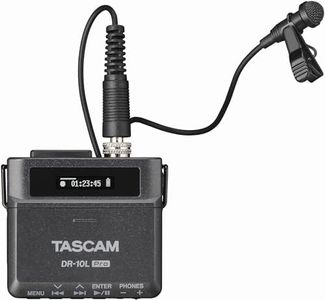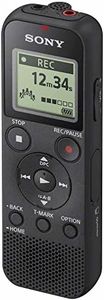We Use CookiesWe use cookies to enhance the security, performance,
functionality and for analytical and promotional activities. By continuing to browse this site you
are agreeing to our privacy policy
10 Best Spy Voice Recorders
From leading brands and best sellers available on the web.Buying Guide for the Best Spy Voice Recorders
Choosing a spy voice recorder can feel a little overwhelming, but the key is to start with a clear understanding of what you need it for—whether it’s for discreet interviews, taking notes for meetings, or personal safety. Focus on how you plan to use the recorder, where you’ll need to hide or place it, and what quality of audio will be necessary for your recordings. Pay close attention to the ease of use, storage options, recording quality, battery life, and how the device blends into its environment. These aspects will guide you to a recorder that fits your specific situation rather than just going for the one with the highest numbers on paper.Recording Time (Memory Capacity)Recording time tells you how long the device can capture audio before it runs out of memory. This is crucial if you need to record for many hours without a chance to transfer files. Recording times generally vary greatly: a few hours is typical for smaller, more discreet recorders, while models with more storage can capture dozens or even hundreds of hours. If your use is for short conversations or quick notes, a smaller memory works well and often makes the recorder more compact. If you expect to leave the recorder running for long periods (like during all-day meetings), higher recording capacity will be a must.
Battery LifeBattery life determines how long the recorder can function before needing a recharge or new batteries. Short battery life means you’ll have to recharge or swap out batteries more frequently, which could be inconvenient or blow your cover if the device is well-hidden. Battery life can range from just a few hours for tiny units to several days for models with larger batteries or specialized low-power designs. Think about how long you’ll leave the recorder unattended and choose a battery life that suits your needs, always factoring in a bit of extra time just in case.
Microphone SensitivityMicrophone sensitivity is all about how well the device picks up quiet sounds or voices from a distance. Higher sensitivity can help you record whispers or conversations from across the room, but may also pick up more background noise. Lower sensitivity works best for close-up or one-on-one situations. If you need to capture quiet conversations in a noisy room or record people from a distance, aim for a recorder with a higher sensitivity mic. For personal notes or interviews conducted up close, standard sensitivity is usually plenty.
Discreet DesignThe design of the recorder – whether it looks like a pen, USB stick, keychain, or something else – determines how easy it is to hide or blend in with your surroundings. Bulkier models may be more noticeable, but can offer better battery and storage capacity. The most discreet models are easier to hide but may have to compromise on recording time or battery. Think about where you plan to hide or carry the device: if it’s for pocket use, a pen or key fob style works; for a desk or room, a USB charger shape might be best. Choose what best matches your environment and makes you feel most secure during use.
Audio Quality (Bitrate and Format)Audio quality is measured by the clarity and detail of the recordings. This is influenced by the bitrate and file format the recorder uses. Higher bitrates and better file formats produce clearer sound but take up more space. Lower settings save space but lower the quality, possibly making speech hard to understand. If you need every word to be crystal clear (for legal, security, or transcription reasons), look for a recorder that offers high audio quality. For casual note-taking, lower quality is usually enough and extends your recording time.
Activation Method (Manual vs Voice-Activated)Activation methods control how you start recording. Manual recorders have a physical switch or button, requiring you to start and stop recording yourself. Voice-activated recorders begin recording automatically when sound is detected and pause during silence, which saves memory and battery. If you need to capture unpredictable conversations or don’t want to manage the recorder constantly, voice activation is a big help. Manual control is better if you need to be sure exactly when recording starts and stops.
Data Transfer OptionsThe way you transfer your recordings—via USB, memory card, Bluetooth or another method—makes a big difference in how easy it is to use your device. Some recorders require you to plug directly into a computer, while others let you transfer files wirelessly or by swapping out memory cards. For quick, frequent transfers, prioritize simple connections, like a USB plug or wireless options. For long-term recording without needing to move files often, this may matter less. Match this feature with how often and where you expect to review your recordings.
